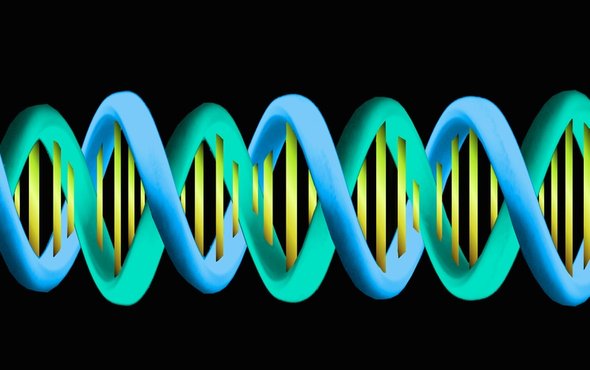(单词翻译:单击)
听力文本
This is Scientific American — 60-Second Science. I'm Christopher Intagliata.
Men inherit their Y chromosomes from their fathers. And they get an almost exact copy, other than a few mutations. Meaning very little changes about the Y chromosome from generation to generation.
"You may just have 100 people with the same Y chromosome, because they're all descended from one man." Marcus Feldman, a population geneticist at Stanford. "They all had this great great-great-great-great-great-great-grandfather. And every male relative of that individual who's a first-degree relative has the same Y chromosome."
Researchers have thus used Y chromosome data—along with mitochondrial DNA, which is passed down only by our mothers—to investigate aspects of ancient populations. For example, one recent study found a huge drop in Y chromosome diversity five-to-seven thousand years ago. At the same time, mitochondrial DNA diversity continued to grow, implying a possible crash in the male population, with 17 women to every man. But:
"It seemed to us that the 17-to-1 sex ratio was just too extreme to be real."

So Feldman and his team used computational models to investigate other ideas. And they found that bloody fights between genetically homogenous clans could have produced the same results. "Essentially we're saying the clans fighting one another are built around having the same Y chromosome."
Imagine a single deadly battle knocking out a whole clan of men with the same Y chromosomes. Then repeat that unpleasant scenario a few times. You'd get a huge drop in the diversity of Y chromosomes, as the victorious clans won battles and expanded. The details are in the journal Nature Communications.
Eventually, Y chromosome diversity bounced back, as smaller clan structures were replaced by large, genetically diverse cities and societies—a cultural innovation that we, too, inherited.
Thanks for listening for Scientific American — 60-Second Science. I'm Christopher Intagliata.
参考译文
这里是科学美国人——60秒科学。我是克里斯托弗·因塔利亚塔。
有一分钟时间吗?
男性从父亲那里继承Y染色体。除了小部分基因突变之外,他们得到的Y染色体几乎与他们的父亲完全相同。这意味着Y染色体在代际传递过程中的变化很少。
“可能会有100个人拥有相同的Y染色体,因为他们都是同一个男性的后代。”斯坦福大学的人口遗传学家马库斯·费尔德曼说到。“他们都拥有同一个曾曾曾曾曾曾曾祖父。而这名男人的所有一级男性亲属都拥有相同的Y染色体。”
因此,研究人员利用Y染色体数据,以及只能从母亲那里继承来的线粒体DNA,来调查古代人类的样貌。比如,最近一项研究发现,Y染色体的多样性在5000至7000年前大幅下降。同时,线粒体DNA的多样性则持续增加,这表明当时男性人口数量可能暴跌,男女人口比例为1:17。但是:
“在我们看来,17比1的性别比例过于极端,可能不是真的。”
因此,费尔德曼和团队利用计算模型来研究其他看法。他们发现,基因相同部落之间的血战可能产生同样的结果。“我们这里所说的互相争斗的部落,从本质上说是拥有相同Y染色体的人组成的。”
想象一下,一场致命斗争导致一整个部落中拥有相同Y染色体的男性全部死亡。之后再重复几次这一不愉快的场景。随着胜利部落赢得斗争并扩大规模,Y染色体的多样性出现急剧下降。这项研究结果发表在《自然通讯》期刊上。
最终,Y染色体的多样性恢复了,因为较小的部落结构被大型且基因多样化的城市和社会所取代——我们也继承了这种文化创新。
谢谢大家收听科学美国人——60秒科学。我是克里斯托弗·因塔利亚塔。
译文为可可英语翻译,未经授权请勿转载!
重点讲解
重点讲解:
1. other than (用于否定陈述后)除了…以外;
I don't know any French people other than you.
除了你,我不认识别的法国人。
2. be descended from 是…的后代的;为…的后裔的;
She told us she was descended from some Scottish Lord.
她告诉我们她是某苏格兰勋爵的后裔。
3. pass down 传递;传下去;
The abused mice grew up to be poor mothers, and appeared to pass down these changes to their offspring.
这些幼鼠成年后成为了糟糕的母亲,并把这种表观遗传变化传给了后代。
4. knock out 摧毁;
The enemy charged up the mountain, attempting to knock out our forces.
敌人向山上冲锋,企图把我们的兵力摧毁掉。


